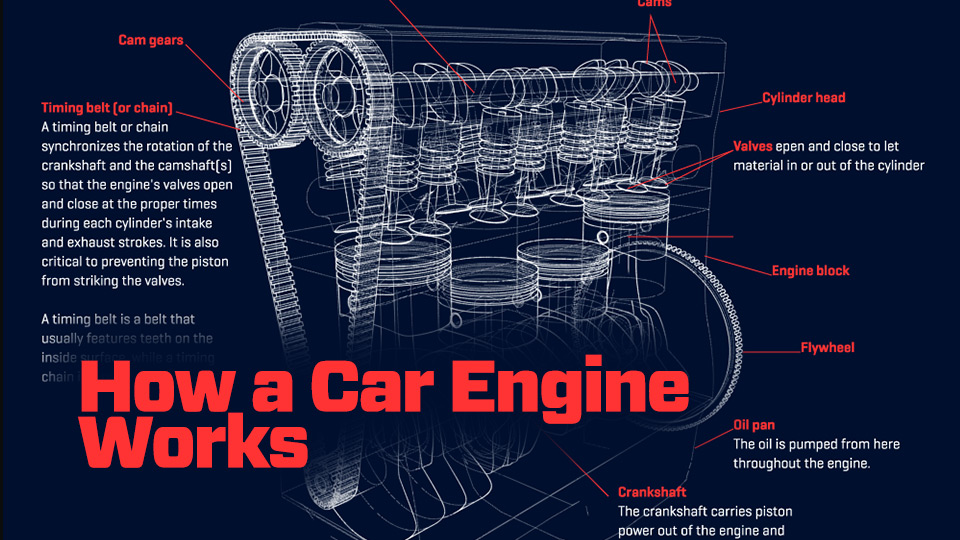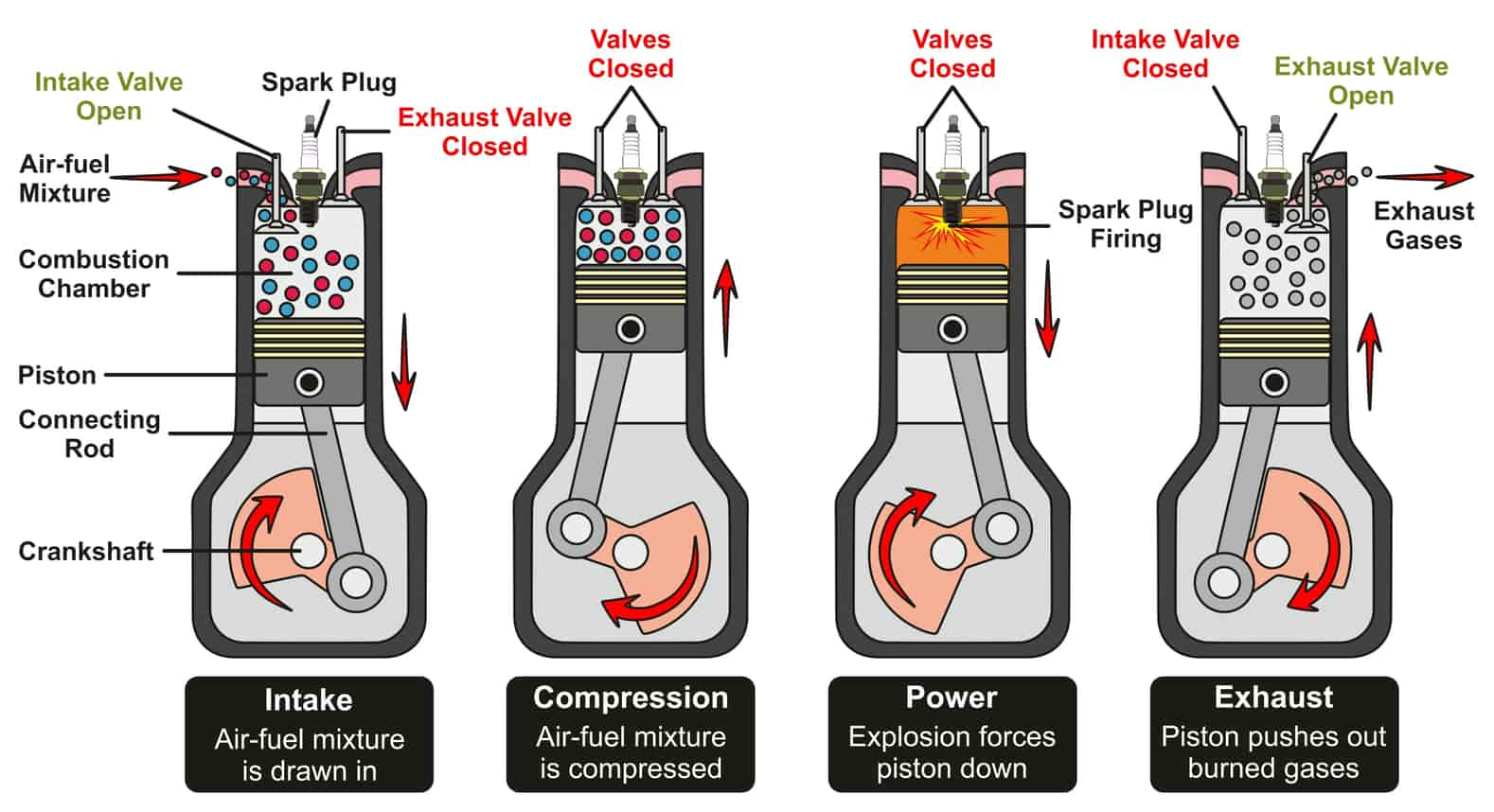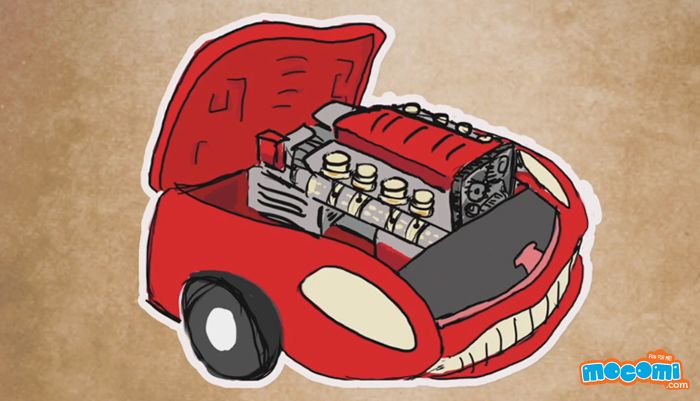Car engines can seem pretty complex at first glance, but once you break them down, they become much more understandable. They're the heart of a vehicle, transforming fuel into the motion that gets us from point A to point B. In this digital age, educational videos have become a fantastic way to grasp how car engines work. They visually demonstrate intricate processes and components in a way that text alone often can't achieve. So, whether you're a budding mechanic or just someone who wants to understand their car better, these videos can be a game-changer!
Basic Components of a Car Engine

When we talk about car engines, they're made up of several key components, each playing a specific role in ensuring everything runs smoothly. Let's break them down:
- Engine Block: The engine block is the core component where many of the essential parts are housed, like cylinders, pistons, and crankshafts. Think of it as the main structure of your engine.
- Cylinders: Cylinders are where the combustion of fuel takes place. Most car engines have four, six, or eight cylinders, and they can be arranged in different configurations, like inline or V-shaped.
- Pistons: Within each cylinder, pistons move up and down, compressing the fuel-air mixture and transferring the energy generated from combustion to the crankshaft.
- Crankshaft: The crankshaft converts the linear motion of the pistons into rotational motion, which ultimately powers the vehicle's wheels.
- Valves: These are crucial for controlling the intake of air and fuel into the cylinders and the exhaust of combustion gases. They open and close in sync with the piston movements.
- Timing Belt/Chain: This component ensures that the valves open and close at the right times in relation to the position of the pistons, maintaining the engine’s rhythm.
- Fuel Injector: In modern engines, fuel injectors deliver precise amounts of fuel directly into the combustion chamber, improving efficiency and performance.
Understanding these components is crucial for anyone looking to dive into the world of car mechanics. Educational videos can illustrate how these parts work together, making it easier to grasp their functions and importance!
Also Read This: Is Dailymotion a Profitable Platform? Understanding the Potential for Earnings
How Combustion Works in an Engine

Ever wondered what’s happening inside your car when you press that gas pedal? It all comes down to a little thing called combustion. At its core, combustion is a chemical reaction where fuel and air mix together, ignite, and produce energy. Let’s break it down:
- Intake Stroke: First, the engine draws in air and fuel through the intake valves. This mixture is critical for the combustion process.
- Compression Stroke: The piston then moves up, compressing that air-fuel mixture. This compression makes the mixture more volatile, getting it ready for ignition.
- Power Stroke: Just when the piston reaches the top, a spark plug ignites the compressed fuel-air mixture. The explosion pushes the piston back down, producing the power needed to turn the crankshaft.
- Exhaust Stroke: Finally, the piston moves up again, pushing the burnt gases out through the exhaust valves.
This cycle repeats itself thousands of times a minute in your engine. But it’s important to note that the type of fuel can impact efficiency and emissions. For example, unleaded gas burns differently compared to diesel fuel.
So, next time you’re behind the wheel, remember that there's a tiny explosion occurring under the hood, driving you forward!
Also Read This: How to Create a Dailymotion Account: A Step-by-Step Guide
Different Types of Car Engines

When it comes to car engines, one size definitely does not fit all! There are various types, each with its own unique characteristics, advantages, and applications. Let’s explore some of the most common types:
| Engine Type | Description | Advantages |
|---|---|---|
| Internal Combustion Engine (ICE) | This is the traditional engine found in most vehicles. It burns fuel to create energy. | High power output, established technology. |
| Electric Engine | Powered by electricity, they use batteries to drive electric motors. | Eco-friendly, low maintenance. |
| Hybrid Engine | Combines an ICE with an electric engine for better fuel efficiency. | Reduced emissions, impressive fuel economy. |
| Diesel Engine | Uses diesel fuel, compressing air to ignite the fuel naturally. | Higher torque, fuel-efficient for long distances. |
Choosing the right engine type depends on various factors, such as driving style, environmental concerns, and budget. Understanding these differences can help you make a more informed choice when purchasing a vehicle.
Also Read This: Watch the Full Music Video of Don Omar’s Virtual Diva on Dailymotion
Benefits of Using Educational Videos for Learning
When it comes to understanding complex subjects like car engines, educational videos offer a treasure trove of benefits. Gone are the days of sifting through dull textbooks, as these videos breathe life into the learning experience.
*1. Visual and Auditory Learning: Educational videos cater to multiple learning styles. Visual learners can see the mechanics of a car engine in action, while auditory learners can absorb explanations in a more engaging way. This combination often leads to a deeper understanding.
2. Simplified Complex Concepts: Car engines have intricate systems that can be challenging to understand through text alone. Videos break down these concepts into digestible segments, often using graphics and animations. For instance, the internal combustion process might be visualized step-by-step, making it accessible for everyone.
3. Flexibility and Accessibility: With platforms like YouTube and Dailymotion, you can learn at your own pace, pausing or rewinding as needed. This flexibility allows learners to revisit complex topics, reinforcing their understanding.
4. Real-World Applications: Many educational videos showcase practical demonstrations, taking viewers under the hood of an actual vehicle. This kind of content helps bridge the gap between theory and practice, making learning more relevant.
5. Engaging Content: Let’s face it, staring at a wall of text can be boring. Educational videos often incorporate humor, storytelling, and real-world examples that captivate the audience and keep them interested. Who wouldn’t prefer a lively video over an outdated textbook?
In conclusion, educational videos transform the learning process from dull to dynamic, making complex topics like car engines accessible and enjoyable.
Also Read This: How to Lip Lock Like a Pro: A Guide for Beginners
Popular Dailymotion Educational Videos on Car Engines
Dailymotion hosts a variety of educational videos that delve into the fascinating world of car engines. Whether you’re a novice or an expert, there’s something for everyone. Here are some popular ones that can enhance your understanding:
| Video Title | Description | Duration |
|---|---|---|
| The Basics of Internal Combustion Engines | A beginner-friendly video explaining how internal combustion engines work, featuring animations and practical demonstrations. | 12:30 |
| How to Maintain Your Car Engine | This video provides tips for regular maintenance, covering oil changes, filter replacements, and other essential tasks. | 15:42 |
| Understanding Engine Components | An in-depth look at various components of a car engine, including pistons, camshafts, and crankshafts, with simple explanations. | 20:15 |
| Common Engine Problems & How to Fix Them | A practical guide to diagnosing and solving frequent engine issues, complete with demonstrations. | 18:39 |
These videos not only enhance your knowledge but also ignite your passion for understanding the mechanics of car engines. So why not dive in and start learning today?
Understanding the Functionality of a Car Engine Through Educational Videos
Educational videos are an invaluable resource for anyone looking to comprehend the complex workings of a car engine. These visual tools can make learning about automotive mechanics more accessible and engaging. Here we will explore the key benefits of utilizing educational videos to understand car engines and highlight some popular types of videos available.
One of the main advantages of educational videos is their ability to break down intricate concepts into understandable segments. Here are some essential topics often covered in these videos:
- Basic Engine Components
- How Internal Combustion Works
- Fuel Systems
- Ignition Systems
- Cooling and Lubrication
- Engine Performance and Diagnostics*
Additionally, many videos employ 3D animations and diagrams, which provide a visual representation of the engine’s components and their interactions. This can significantly enhance understanding, making it easier to grasp how everything fits together. Below is a table highlighting various types of educational videos:
| Type of Video | Description |
|---|---|
| Tutorials | Dive deep into specific components or repairs. |
| Explainer Videos | Provide overviews of how engines work. |
| Documentaries | Investigate the history and evolution of car engines. |
There is a wealth of educational resources available on platforms like YouTube, Coursera, and specialized automotive websites, catering to various learning preferences from visual to auditory learners.
In conclusion, understanding your vehicle's engine through educational videos not only enhances your mechanical knowledge but also empowers you to make informed decisions about maintenance and repairs.
 admin
admin








